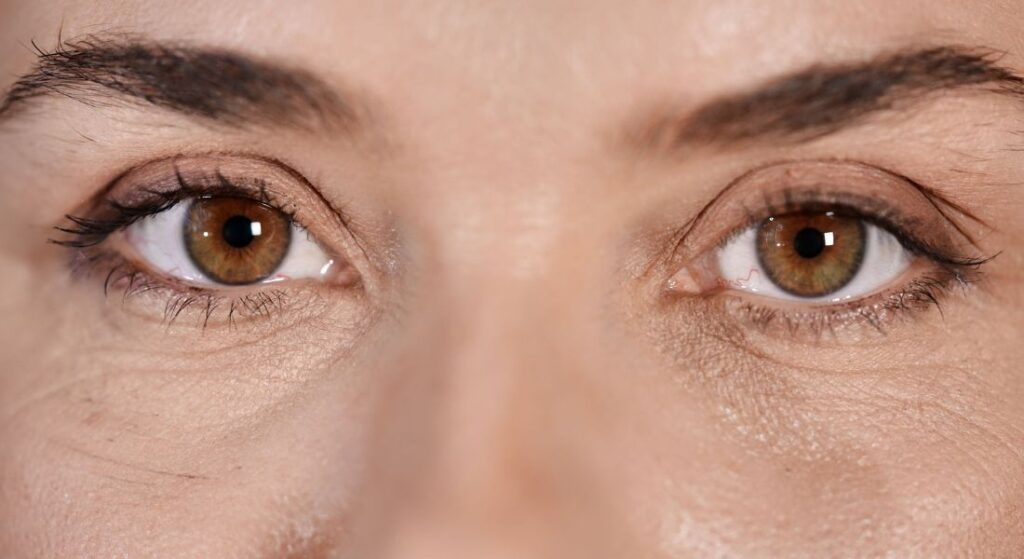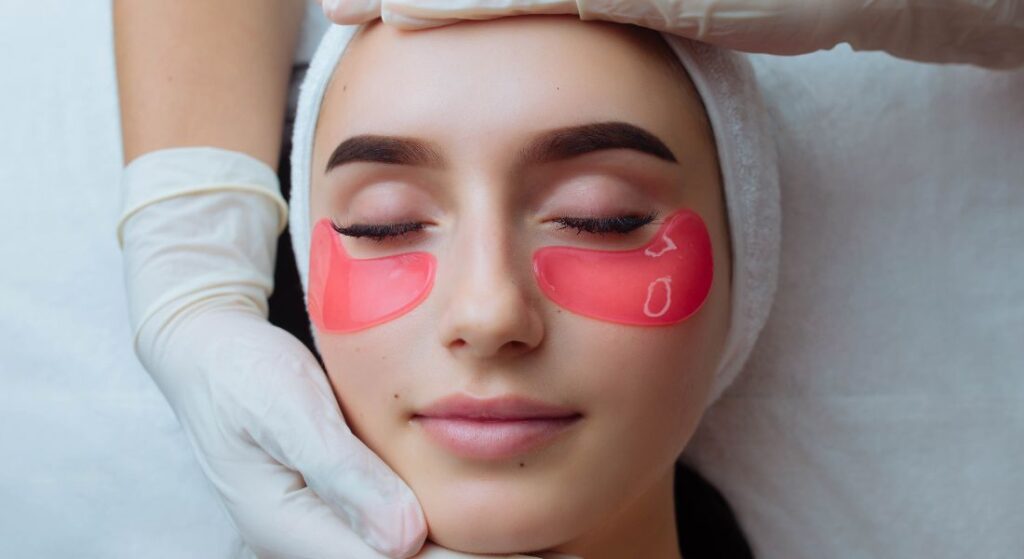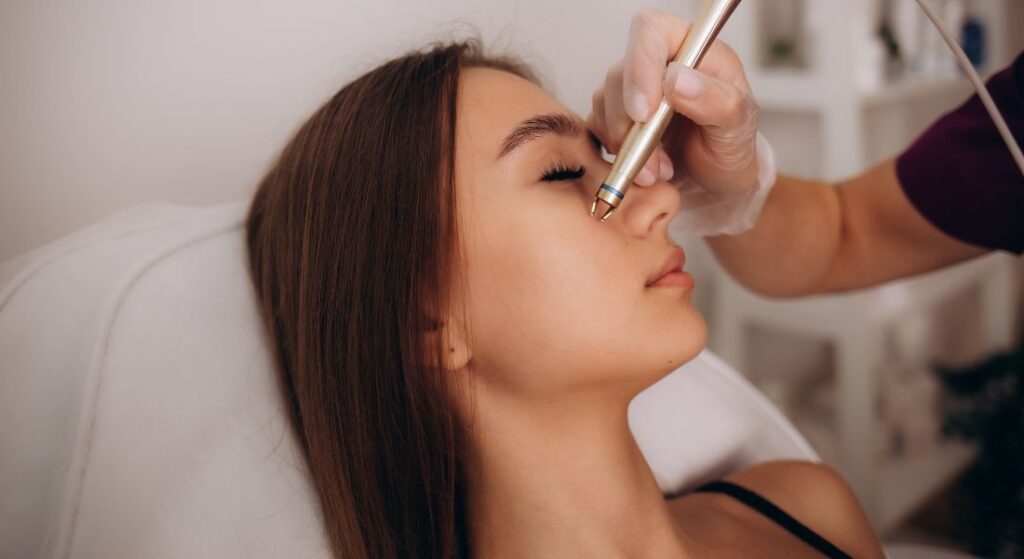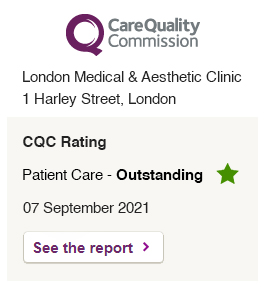
The skin under your eyes is one of the first areas to show signs of ageing. Fine lines, wrinkles, and dark circles can make you look tired even when you’re well-rested. If you’ve tried eye creams and serums with little success, you may have heard about CO2 laser resurfacing as a more effective solution.
But is CO2 laser really safe and effective for the delicate under-eye area? The answer is yes when performed by an experienced specialist, it can dramatically improve texture, tone, and tightness. However, because the skin here is thinner and more sensitive than the rest of the face, precision and aftercare are crucial.
In this guide, I’ll walk you through how CO2 laser works under the eyes, what results you can expect, and what makes this treatment different from full-face laser resurfacing.
Why the Under-Eye Area Needs Special Care

The skin under your eyes isn’t like the skin on the rest of your face. In fact, it’s about ten times thinner than the skin on your cheeks. Because of this, it doesn’t have the same amount of oil glands, collagen, or natural support structure. That means it’s much more delicate, and as a result, you’re more likely to notice fine lines, sagging, puffiness, or dark circles in this area first.
On top of its natural fragility, daily life puts even more pressure on the under-eye skin. Think about how much it’s exposed the sun, late nights, long hours in front of screens, or even just rubbing your eyes when you’re tired. Over time, these habits, combined with natural ageing, can speed up the appearance of wrinkles and discolouration.
This is why your under-eye area deserves a little extra attention. Unlike the rest of your face, it can’t always bounce back easily from stress or damage. Targeted care that’s gentle but effective is key. The right treatments can help strengthen and tighten this sensitive skin without overwhelming it, leaving you looking refreshed and more awake.
What Is CO2 Laser Treatment?

A CO2 laser uses carbon dioxide energy to precisely remove the outer layers of damaged skin while stimulating collagen production deep below the surface. It’s often described as “resurfacing” because it renews your skin’s top layer, revealing a smoother, fresher appearance.
When applied around the eyes, the treatment helps:
– Reduce fine lines and crow’s feet.
– Tighten loose or crepey skin.
– Improve under-eye texture.
– Diminish dark pigmentation caused by sun damage or thinning skin.
The result is a more youthful, refreshed appearance without the need for surgery.
How Does It Work on the Under-Eye Area?
So how does laser treatment actually work on the delicate under-eye area? Essentially, the laser emits tiny, precise beams of light that create controlled micro-injuries in your skin. Don’t worry, these are very small and targeted. The idea is to kickstart your body’s natural healing process, which in turn encourages your skin to produce more collagen and elastin.
Collagen and elastin are the proteins that give your skin its firmness and elasticity. By boosting their production, the laser helps your under-eye area gradually become tighter, smoother, and more youthful-looking over the weeks and months after treatment.
Most people have this procedure done with a fractional CO2 laser. What makes it special is that it treats small columns of tissue at a time rather than the entire area. This targeted approach means your skin can heal faster, and the risk of side effects is much lower compared to older, fully ablative lasers. In short, it’s a smart, precise way to rejuvenate a delicate part of your face without causing unnecessary stress to the skin.
Who Is a Good Candidate?
You may be a good candidate for under-eye CO2 laser treatment if you:
– Have fine lines or wrinkles around the eyes.
– Struggle with crepey, sagging under-eye skin.
– Have sun damage or pigmentation in the area.
– Want a non-surgical alternative to blepharoplasty.
It’s not suitable for everyone. If you have very dark skin tones, certain medical conditions, or a history of poor wound healing, your specialist may recommend gentler options.
The Treatment Process
If you’re considering a CO2 laser session for your under-eye area, it helps to know what the experience is typically like.
Consultation: First, you’ll meet with your specialist, who will take a close look at your skin and discuss your goals. This is your chance to ask questions, share any concerns, and make sure the treatment is right for you.
Preparation: To keep you comfortable, a topical anaesthetic cream is applied to the area. This helps ensure that the procedure is as painless as possible.
Treatment: The laser is then carefully passed over your under-eye region, targeting fine lines, pigmentation, and any other concerns you’ve discussed with your specialist. Because the laser is precise, it focuses only on the areas that need it, leaving the surrounding skin unharmed.
Cooling and soothing: Once the session is done, a calming ointment is applied to help your skin recover and feel refreshed.
The entire process usually takes less than 45 minutes, and the best part is that you can return home immediately afterward. Many people are surprised at how quick and straightforward the procedure feels, especially considering the visible improvements it can deliver over the following weeks.
Is It Safe Around the Eyes?
You might be wondering if it’s really safe to use a laser so close to your eyes. The good news is that, CO2 laser resurfacing is generally safe for the under-eye area when done by a qualified professional. During treatment, protective eye shields are placed over your eyes to keep your vision completely safe, and the laser settings are carefully adjusted to suit the delicate skin beneath your eyes.
That said, it’s absolutely essential that you only have this procedure at a reputable clinic with experienced practitioners. The under-eye area is very sensitive, and precision is key. Even the most advanced technology can’t replace the skill and expertise of someone who knows exactly how to treat this delicate skin. By choosing the right professional, you can enjoy the benefits of smoother, tighter under-eye skin with minimal risk.
It’s also important to follow aftercare instructions carefully. Your specialist may recommend gentle cleansers, soothing creams, and sun protection to ensure your skin heals properly. Taking these steps can help reduce redness, swelling, and the risk of any complications.
Finally, remember that results appear gradually. You won’t see a complete transformation overnight, but over the weeks and months following treatment, you’ll likely notice firmer, more radiant under-eye skin. Being patient and consistent with your care will help you get the best long-term results.
What Results Can You Expect?

Once your under-eye area has recovered from treatment, you’ll likely start noticing some visible improvements. Many people see smoother, tighter skin, and a noticeable reduction in fine lines and crow’s feet. Your under-eyes can appear brighter and more awake, giving your overall face a refreshed, youthful look.
You may also notice improvements in skin tone and texture. The laser helps stimulate your skin’s natural healing process, so over time, your under-eye area can feel firmer and more resilient. The results aren’t immediate it takes a few weeks for collagen production to kick in fully, and many people see continued improvement for up to six months after the procedure.
The best part? The effect often looks very natural. Most patients describe it as “naturally refreshed” rather than artificial or overdone. It’s subtle yet transformative, giving you a more rejuvenated appearance without the look of heavy cosmetic intervention.
Another benefit is that, because the treatment targets your skin’s natural repair mechanisms, results can feel long-lasting. With proper skincare, sun protection, and healthy lifestyle habits, the improvements you see can be maintained for months, helping you enjoy a consistently refreshed look.
Finally, many people find that improved under-eye skin has a surprisingly positive impact on confidence. When you feel like you look more awake and youthful, it can brighten your mood, make you feel more energised, and even influence the way others perceive you. It’s a small area with a big effect, both cosmetically and emotionally.
How Many Sessions Do You Need?
The number of sessions you’ll need really depends on your individual skin concerns and goals. For mild issues, such as subtle fine lines or early signs of under-eye aging, you may see noticeable improvement after just one session.
If your concerns are more pronounced for example, deeper wrinkles, significant pigmentation, or persistent texture issues you might need 2–3 sessions to achieve the best results. These sessions are usually spaced a few months apart to allow your skin to heal and for collagen to build gradually.
Your specialist will create a personalised treatment plan tailored specifically to your skin. They’ll consider factors like your skin type, sensitivity, and the areas you want to improve, ensuring that you get results that are both effective and natural-looking.
It’s also worth noting that many people combine laser treatment with a dedicated skincare routine. Using gentle moisturisers, serums, and sun protection in between sessions can help maximise the results and keep your under-eye area looking refreshed for longer.
Recovery: How Long Does It Take?
Because the under-eye area is so delicate, recovery from a CO2 laser session is usually a bit faster than a full-face treatment, but it still requires some care and attention. Knowing what to expect can help you plan ahead and feel more comfortable during the healing process.
Here’s a typical timeline you might experience:
First few days: Mild redness, swelling, and sensitivity are normal.
Within the first week: Some peeling or dryness may occur as your skin begins to renew.
After the first week: New skin gradually appears, and improvements in texture and tone become noticeable over the following weeks.
Most people find they can get back to their usual routine within a few days, depending on comfort and your specialist’s advice. especially with some light makeup if desired. It’s important to follow your specialist’s aftercare instructions during this time using gentle skincare, avoiding harsh products, and applying sun protection to support healing and maximise your results.
Gentle reminder: Always follow your specialist’s advice for aftercare, as individual healing times may vary.
How to Speed Up Healing
You can support faster recovery by following these tips:
– Keep the area clean and well moisturised.
– Avoid rubbing or touching your eyes.
– Stay out of direct sunlight and always use SPF once your skin heals.
– Use only products recommended by your specialist.
– Avoid makeup until the peeling phase is complete.
If you’re unsure about any stage of recovery, check in with your clinic.
Comparing CO2 Laser to Other Eye Treatments
CO2 Laser:
Best for wrinkles, texture, and pigmentation. It requires a downtime of about 7–10 days, and the results can last for 2–5 years. The cost ranges from £400 to £1,200.
Dermal Fillers:
Ideal for treating hollow tear troughs with no downtime. The results last between 6–12 months, and the cost is around £300–£600.
Microneedling:
Helps with mild lines and collagen boost. It involves 1–2 days of downtime, provides results lasting 6–9 months, and costs about £150–£300.
PRP (Platelet-Rich Plasma):
Targets texture and dark circles with 1–2 days of downtime. Results last 9–12 months, and the treatment costs between £250–£600.
Chemical Peel:
Best for surface pigmentation. It has a downtime of 3–5 days, offers results lasting 6–9 months, and costs approximately £100–£300.
Overall:
The CO2 laser delivers the most dramatic and long-lasting results compared to other treatments, though it requires slightly more downtime.
Risks and Side Effects
Temporary redness, swelling, and dryness are expected after the procedure. More rarely, patients may experience:
-Prolonged redness.
-Temporary hyperpigmentation (especially in darker skin tones).
-Mild irritation or crusting.
Choosing an experienced specialist significantly reduces these risks. Always follow your aftercare plan carefully to prevent complications.
Cost: Is It Worth It?
The cost of under-eye CO2 laser treatment in the UK typically ranges from £400 to £1,200 depending on:
-The clinic’s reputation and technology.
-The depth and size of the area treated.
-Whether it’s part of a full-face procedure.
Considering that results last years rather than months, most patients find it a worthwhile investment compared to repeated filler or peel sessions.
Combining Treatments for the Best Results
For even better outcomes, CO2 laser can be combined with complementary treatments such as:
PRP (Platelet-Rich Plasma): Enhances healing and boosts collagen.
Polynucleotides: Promotes tissue repair and hydration.
Dermal fillers: Adds volume where hollowness contributes to shadows.
A skilled practitioner can help design a combination approach tailored to your unique concerns.
Why Choose a Professional Clinic
Under-eye laser resurfacing requires exceptional precision. Choosing the right clinic ensures:
– Medical-grade technology and safety protocols.
– Personalised settings for your skin type.
– Comprehensive aftercare and follow-up.
– Experienced practitioners with proven results.
If you’re considering CO2 laser treatment in London, make sure to select a clinic with expertise in advanced laser rejuvenation for delicate areas like the eyes.
Long-Term Maintenance
Once your skin has healed and rejuvenated, you can maintain results by:
– Wearing sunscreen daily.
– Using gentle, hydrating eye creams with peptides or hyaluronic acid.
– Avoiding smoking and excessive sun exposure.
– Getting maintenance treatments every few years if needed.
These small habits help preserve your investment and keep your under-eye area looking bright and youthful.
FAQs:
1. Is CO2 laser safe for the under-eye area?
Yes, CO2 laser treatment is safe for the under-eye area when performed by a qualified and experienced specialist. The procedure uses precise laser energy to target only specific layers of the skin while protecting surrounding tissue. During treatment, protective eye shields are used to safeguard your eyes completely. It’s important to choose a clinic with medical-grade technology and experienced practitioners to ensure both safety and optimal results.
2. How does CO2 laser help reduce under-eye wrinkles and dark circles?
The CO2 laser works by removing damaged surface skin cells and stimulating collagen and elastin production underneath. This process tightens and smooths the skin while improving its tone and texture. As new collagen forms, fine lines, wrinkles, and dark pigmentation caused by thinning skin or sun exposure become visibly reduced, leading to brighter and younger-looking under-eyes.
3. How many sessions are needed for best results?
The number of sessions depends on your skin’s condition and goals. Most patients notice significant improvement after just one session. However, those with deeper wrinkles or more severe pigmentation may need two to three sessions spaced a few months apart. Your specialist will evaluate your skin and create a customised treatment plan that ensures the most natural and effective results.
4. What is the downtime after under-eye CO2 laser treatment?
You can expect mild redness, swelling, and sensitivity for about 3–7 days following treatment. Light peeling may occur as your skin renews itself. Most people feel comfortable returning to normal activities within a week. Following aftercare instructions, such as using soothing creams, avoiding sun exposure, and applying SPF, helps ensure smooth healing and faster recovery.
5. Are the results from CO2 laser permanent?
While the results are long-lasting, they are not entirely permanent. Most patients enjoy smoother, tighter, and brighter under-eyes for two to five years after treatment, depending on their skin type and lifestyle. Regular skincare, sun protection, and healthy habits can help prolong the effects. Some patients choose to have maintenance treatments every few years to keep the results fresh.
6. What are the possible side effects of under-eye CO2 laser?
Mild redness, swelling, and dryness are common and temporary. In rare cases, patients may experience hyperpigmentation, prolonged redness, or mild irritation. These effects are usually short-lived and can be minimised by following proper aftercare and choosing an experienced practitioner. Always ensure your treatment is performed in a certified clinic to reduce the risk of complications.
7. How does CO2 laser compare to other under-eye treatments like fillers or PRP?
CO2 laser provides the most comprehensive and long-lasting improvement by addressing wrinkles, texture, and pigmentation simultaneously. In contrast, fillers add volume to hollow areas but don’t improve skin texture. PRP enhances collagen and helps with dark circles but offers subtler results. Microneedling and chemical peels can help with mild concerns but are less effective for deep rejuvenation. Overall, CO2 laser delivers deeper, more dramatic, and lasting results.
8. Who is not suitable for under-eye CO2 laser treatment?
People with very dark skin tones, active skin infections, certain medical conditions (like diabetes or autoimmune disorders), or a history of poor wound healing may not be ideal candidates. Pregnant or breastfeeding women are also advised to wait before undergoing treatment. Your specialist will assess your skin and medical history to determine if CO2 laser is right for you.
9. Can I wear makeup after CO2 laser treatment?
It’s best to avoid makeup for about 7–10 days after the procedure until your skin has fully healed and the peeling phase is complete. Applying makeup too early can irritate your skin or increase the risk of infection. Once your specialist confirms it’s safe, you can use mineral-based or non-comedogenic makeup to minimise irritation.
10. Why choose London Medical & Aesthetic Clinic for CO2 laser treatment?
London Medical & Aesthetic Clinic is one of the UK’s leading centres for advanced laser treatments. Under the expertise of Dr Ayham Al-Ayoubi, an internationally recognised facial rejuvenation and laser specialist, patients receive highly personalised, safe, and effective care. Dr Al-Ayoubi’s precision and extensive experience ensure natural, long-lasting results tailored to each individual’s needs, making the clinic a top choice for under-eye CO2 laser resurfacing in London.
Final Thoughts: Is CO2 Laser Good for Under Eyes?
CO2 laser resurfacing can deliver remarkable improvements in under-eye wrinkles, texture, and pigmentation all without surgery. It’s one of the few treatments that works on multiple concerns at once, tightening the skin while boosting collagen for long-term rejuvenation. Although some downtime is expected, the results are natural, long-lasting, and well worth the recovery period for most patients.
When performed by an experienced specialist, the treatment can safely and effectively refresh the delicate under-eye area, leaving you looking more rested and youthful. The key is precision, expertise, and proper aftercare.
If you’re considering CO2 laser treatment in London, you can contact us at the London Medical & Aesthetic Clinic to discuss your goals with Dr Ayham Al-Ayoubi. With advanced technology, personalised care, and a meticulous approach, we’ll help you achieve radiant, refreshed eyes and renewed confidence.
References:
1. Guida, S., Fallico, N., Longo, C., Micali, G. and Giuffrida, R., 2018. Resurfacing with ablation of periorbital skin technique: retrospective study on lower eyelid rejuvenation with CO2 laser. Journal of Cutaneous and Aesthetic Surgery, (e-pub). Available at: https://www.ncbi.nlm.nih.gov/pmc/articles/PMC6199626/
2. Pham, R., 2010. Dual-Depth Fractional Carbon Dioxide Laser Resurfacing for Periocular Rhytidosis. Dermatologic Surgery, 36(5), pp.629. DOI: 10.1111/j.1524-4725.2010.01541.x. Available at: https://journals.lww.com/dermatologicsurgery/_layouts/15/oaks.journals/downloadpdf.aspx?an=00042728-201005000-00008
3. Shenhav, L.T. et al., 2023. The Safety and Efficacy of a Dual CO2 and 1570-nm Laser for Periorbital Rejuvenation. Lasers in Surgery and Medicine. Available at: https://www.ncbi.nlm.nih.gov/pmc/articles/PMC10194056/
4. Levy, T. et al., 2025. Expert Consensus on Clinical Recommendations for Fractional Ablative CO2 Laser in Facial Skin Rejuvenation. Lasers in Surgery and Medicine, 57, pp.15–26. DOI: 10.1002/lsm.23850. Available at: https://vbn.aau.dk/files/769162620/Levy_et_al._2025_._Expert_Consensus_on_Clinical_Recommendations_for_Fractional_Ablative_CO2_Laser_in_Facial_Skin_Rejuvenation_Treatment.pdf
5. Smith, A. et al., 2022. Potent Periorbital Fractionated CO₂ Laser Resurfacing. PubMed. Available at: https://pubmed.ncbi.nlm.nih.gov/35947796/





